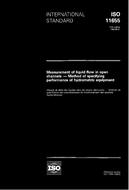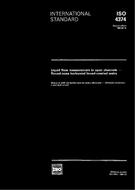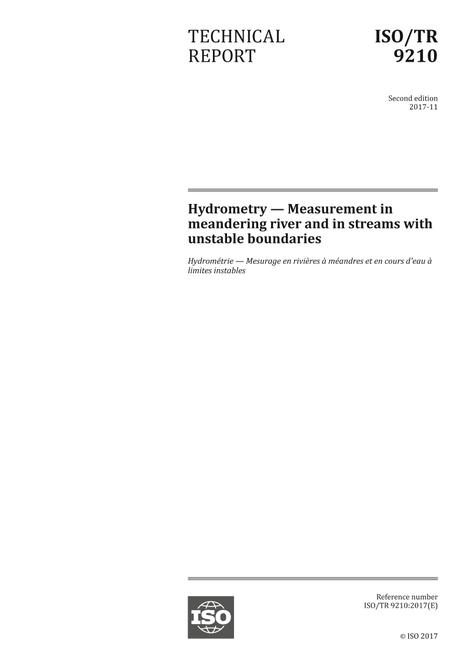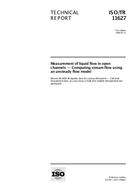-
-
Available Formats
- Options
- Availability
- Priced From ( in USD )
-
Available Formats
-
- Immediate download
- $120.00
- Add to Cart
-
- Printed Edition
- Ships in 1-2 business days
- $138.00
- Add to Cart
Customers Who Bought This Also Bought
-

ISO 11655:1995
Priced From $81.00 -

ISO 4374:1990
Priced From $124.00 -

ISO/TR 9210:2017
Priced From $81.00 -

ISO/TR 9212:2015
Priced From $166.00
About This Item
Full Description
This Technical Report describes a method for computing continuous records of stream flow in an open channel through the numerical solution of the one-dimensional unsteady flow equations. Such an approach is typically identified as an unsteady flow model and generally involves the use of computers for solution of the flow equations.
Unsteady flow models are appropriate for computing stream flow records at locations where (1) a single-valued stage-discharge relation does not exist, (2) backwater affects the discharge under selected or all conditions, (3) flows are affected by tides, or (4) it is not possible to gage the flow using velocity-area methods. Unsteady flow models also are appropriate for evaluating the effects of changes in a managed flow regime on downstream conditions prior to the implementation of any changes.
This Technical Report is applicable to steady and unsteady flows, to nominee flows, and to tidal flows in which there are no significant longitudinal and vertical density gradients. The method is considered equivalent to, or better than, the commonly used stage-fall-discharge technique (ISO 1100-1:1996, 7.2 and Annex C) because the method uses information on the physical characteristics of the channel, including the cross-sectional geometry, channel rugosity and channel slope, and the method is based on a mathematical description of the physics of fluid flow.
This Technical Report describes the theoretical basis and fundamental assumptions of the technique, and provides a summary of selected numerical methods used to solve the unsteady flow equations. Also provided are details on the application of an unsteady flow model, including data requirements, procedures for model calibration, testing, and applications, and identification of uncertainties associated with the method. This Technical Report does not provide sufficient information for the development of a computer program for solving the unsteady flow equations, but rather is based on the assumption that an adequately documented computer program is available





